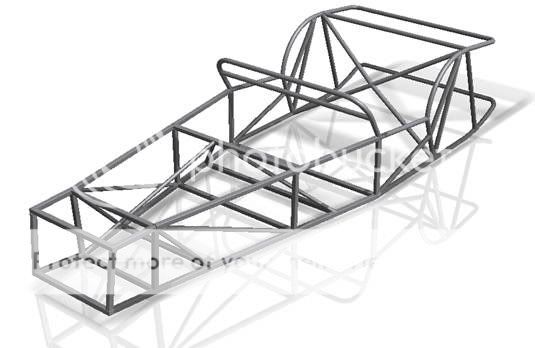I can make a superior car to Chapman any day of he week, different times, different tools.
Oh and I start in a couple of months (relative to production, not "one offs") so your chance to judge me is close 
Lotus Mark I (1948): Austin 7 based car
Lotus Mark II (1949–1950): Ford-powered trials car
Lotus Mark III (1951): 750 cc formula car
Lotus Mark IV (1952): Trials car
Lotus Mark V (1952 2): 750 cc formula car—never built
Lotus Mark VI (1953–1955): The first "production" racer—about 100 built
Lotus Seven (1957–1970): Classic open sports car, a minimalist machine designed to manoeuvre a racing circuit and nothing else. The rights to the Seven were sold in 1973 to Caterham Cars, who continue to produce it today. Updated versions of this 1957 design are also produced by other speciality firms, including Westfield Sportscars and Donkervoort. Originally the number seven was applied to a Riley-powered Formula 2 car, but the vehicle was never completed in its original form, finally emerging instead as the Clairmonte Special, a two-seat sports car powered by a Lea-Francis engine.
Lotus Mark VIII (1954): sports racer
Lotus Mark IX (1955): sports racer, based on Eight
Lotus Mark X (1955): sports racer, a more powerful Eight
Lotus Eleven (1956–1957): sports racer
Lotus 12 (1956–1957): Formula Two and Formula One racecar
Lotus 13: Designation not used
Lotus 14 (1957–1963): First production street car—the Elite
Lotus 15 (1958): Sports racer—successor to the Eleven
Lotus 16 (1958–1959): F1/F2 car based on the Twelve
Lotus 17 (1959): Sports racer update of the 15—not successful
Lotus 18 (1960–1961): First mid-engined Lotus single seater—Formula Junior/F2/F1
Lotus 19 (1960–1962): Mid-engined sports racer—"Monte Carlo"
Lotus 20 (1961): Formula Junior
Lotus 21 (1961): Formula One
Lotus 22 (1962–1965): Formula Junior/F3
Lotus 23 (1962–1966): Small displacement mid-engined sports racer
Lotus 24 (1962): Formula One
Lotus 25 (1962–1964): Formula One World Champion
Lotus 26 (1962–1971): Production street sports car—the original Elan.
Lotus 27 (1963): Formula Junior
Lotus 28 (1963–1966): Lotus version of the Ford Cortina street/racer
Lotus 29 (1963): Indy car—Ford stock block
Lotus 30 (1964): Large displacement sports racer (Ford V8)
Lotus 31 (1964–1966): Formula Three space frame racer
Lotus 32 (1964–1965): Monocoque F2 and Tasman Cup racer
Lotus 33 (1964–1965): Formula One World Champion
Lotus 34 (1964): Indy car—DOHC Ford
Lotus 35 (1965): F2/F3/FB
Lotus 36 (1965–1968): Fixed Head Coupe version of the original Elan, so called perhaps to distinguish it from the Type 26 Elan which could be fitted with a removable hard top)
Lotus 38 (1965): Indy winning mid-engined car
Lotus 39 (1965–1966): Tasman Cup formula car
Lotus 40 (1965): Improved(?) version of the 30
Lotus 41 (1965–1968): Formula Three, Formula Two, Formula B
Lotus 42 (1967): Indy car—raced with Ford V8
Lotus 43 (1966): Formula One
Lotus 44 (1967): Formula Two
Lotus 45 (1966–1974): Convertible (Drop Head Coupe), a version of the original Elan with a revised body style, most notable for its permanent side window frames.
Lotus 46 (1966–1968): Original Renault-engined Europa
Lotus 47 (1966–1970): Racing version of Europa
Lotus 48 (1967): Formula Two
Lotus 49 (1967–1969): Formula One World Champion
Lotus 50 (1967–1974): Four-seat "Elan +2" production car
Lotus 51 (1967–1969): Formula Ford
Lotus 52 (1968): Prototype "Europa" twincam
Lotus 53 (1968): Small displacement sports racer—never built
Lotus 54 (1968–1970): Series 2 "Europa" production car.
Lotus 55 (1968): F3
Lotus 56 (1968–1971): Indy turbine wedge/F1 turbine (56B)
Lotus 57 (1968): F2 design study
Lotus 58 (1968): F1 design study
Lotus 59 (1969–1970): F2/F3/Formula Ford
Lotus 60 (1970–1973): Greatly modified version of the Seven—AKA Seven S4
Lotus 61 (1969): Formula Ford wedge
Lotus 62 (1969): prototype Europa racer
Lotus 63 (1969): 4-wheel drive F1
Lotus 64 (1969): 4-wheel drive Indy cars—did not compete
Lotus 65 (1969–1971): "Federalized" Europa S2
Lotus 66: designation not used
Lotus 67 (1970): Proposed Tasman Cup car—never built
Lotus 68 (1969): F5000 prototype
Lotus 69 (1970): F2/F3/Formula Ford
Lotus 70 (1970): F5000/Formula A
Lotus 71: Undisclosed design study
Lotus 72 (1970–1972): Formula One World Champion
Lotus 73 (1972–1973): F3
Lotus 74 (1971–1975): Europa Twin Cam production cars
Lotus 75 (1974–1982): Luxury 4-seat GT—"Elite II"
Lotus 76 (1975–1982): Fastback version of Elite II—"Éclat S1"—also 1974 F1
Lotus 77 (1976): F1
Lotus 78 (1977–1978): F1 ground effects car
Lotus 79 (1978–1979): Formula One World Champion—also street GT "Esprit" (1975–1980)
Lotus 80 (1979): F1
Lotus 81 (1980–1981): F1—designation also used for Sunbeam Talbot rally car
Lotus 82 (1982–1987): Turbo Esprit street GT car
Lotus 83 (1980): Elite series 2
Lotus 84 (1980–1982): Éclat series 2
Lotus 85 (1980–1987): Esprit series 3
Lotus 86 (1980–1983): F1 dual chassis—never raced
Lotus 87 (1980–1982): F1
Lotus 88 (1981): F1 dual chassis car—banned
Lotus 89 (1982–1992): Lotus Excel GT—re-engineered Éclat
Then we'll judge you on the 'pretty awful" car you made

























